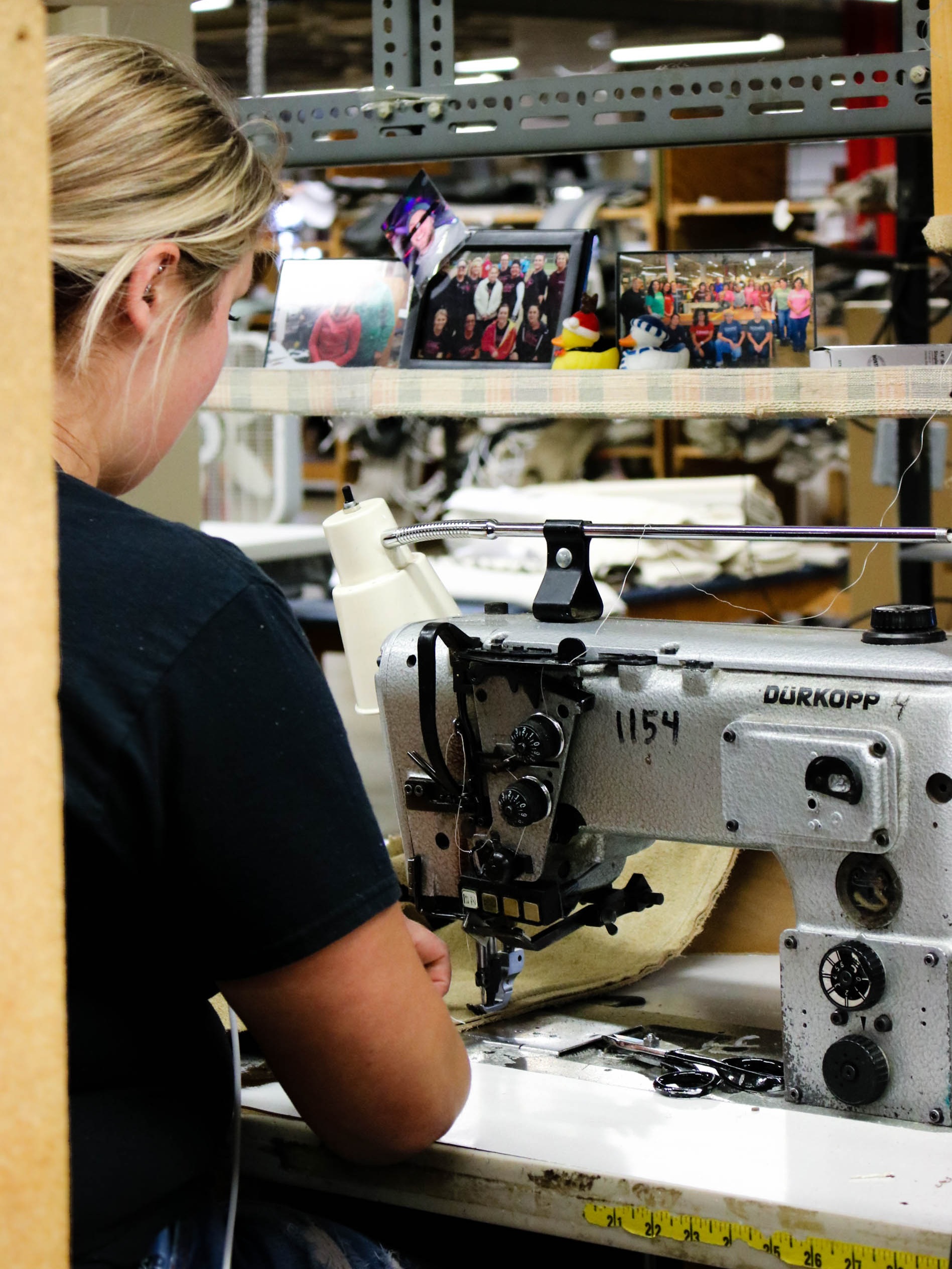By Paul Miller
Interior Designer, IDS Professional Member
Read Time: 5 Minutes
Most of our designs come together around upholstery. The forms of the pieces and the fabrics that outfit them establish a color palette and express the style our clients desire. Upholstery is perhaps the most hard working furniture in the home, which is why we work with quality American makers for all of our seating. These dedicated artisans use traditional craftsmanship and modern innovation to produce enduring heirloom furniture. Their creative teams travel the globe to keep us up to date with fresh fabrics that are as stylish as they are durable. What I look for in upholstery is what you can see on the outside and what is hidden beneath the beautiful coverings.
What Lies Beneath
For the homeowner who wants lasting performance from their upholstery, it's important to know what's going on under the wrappings of a sofa. A well-built piece of upholstery should be constructed of kiln-dried hardwood, with dowelled joinery and additional corner blocks to reinforce the frame. In the most state-of-the-art construction, the springing is constructed with machine-tied coils, which provide the most even weight distribution and long-lasting comfort.
The alternate system, called sinuous coil construction, is commonly used by even some better furniture makers, but not all sinuous coil systems are alike. Look for thick gauge steel and rows of springs packed tightly from left to right; generous gaps between each sinuous coil mean less support and are a sign that the maker is cutting corners. The clips that affix these coils to the frame should be screwed into the wood and not stapled so that they remain firmly in place.
Functional Details
The stylings of a piece can influence how well the furniture will perform. Upholstery with fixed seat cushions and attached back cushions can seem appealing because they stay in place and look more tailored. However, the ability to flip cushions over is what helps distribute wear and tear on the fabric and cushioning. By flipping-and-fluffing sofa cushions, the fabric will last doubly long and the inserts will retain their shape better.
Tufting is a traditional detail that looks great on classic and modern upholstery, but it does inherently stiffen the feel of the seat and back. Use tufting for accent chairs and ottomans, but when fluffy seating is desired, leave the buttons off.
Tufting on upholstery is gorgeous, but you must know when it is best to apply it (or when to leave it off). In our Fairmont Avenue project, I opted for tufting on this gem of an occasional chair.
Fabric
Once the room layout is established, we plan out the color palette of a room before any purchases are made. We generally start with the largest pattern and color influencers first. This might be a graphic rug or wallpaper; sometimes it might be drapery fabric if a patterned fabric is desired. Selecting the largest or most impactful pattern first establishes the color palette for the room. The last element I select is the wall color. This is because textile choices are limited compared to paint color, which can be matched and manipulated with infinite outcomes.
As a designer, I am as likely to break rules as to follow them, which comes easy to be me because I am trained to see the big picture. All the same, there are some general rules of thumb for selecting fabric that I think are invaluable. The largest piece of upholstery in the room should typically be an interesting texture with no discernible pattern. Save the fun, expressive graphics for accent pieces, drapery, and pillows, but make sure that a fabric with a large repeat will show sufficiently in smaller applications.
Colorful pillows keep this vibrant space expressive, while the upholstery itself is in a livable grey. See more of our Bluemont House project, published in Home & Design Magazine.
Your fabric must be well suited to the application. Stripes are not ideal for sectionals because on the corner cushions, the pattern will run perpendicular to one of its neighboring cushions. Similarly, rectilinear patterns like stripes and plaids become chaotic on tufted pieces, as the folds of the fabric distort the pattern.
Avoid details like colored contrast welts on large pieces because a work horse piece like a well made sofa will often outlast your color preferences. Stick to classic neutrals or desaturated hues for the biggest pieces. (Unless you are fearless, in which case, commit fully to a color choice that you know you will love a long time, like a bold red sectional. It isn't for everyone but I love to encourage expressive and joyful choices in home design.)
Experience Matters
In my years in design, I have discovered that clients particularly appreciate my guidance when it comes to these important home elements. No one wants to regret this choice either on delivery day because the fabric doesn't compliment the room or a couple of years down the line because the sofa hasn't held up to wear and tear. We offer a valuable service in that we layout the room with selections we know will fit and provide comfort, even before fabrics are selected. By working with artisans, we are able to offer customization that helps us suit our seating to an endless variety of homes and personalities.








